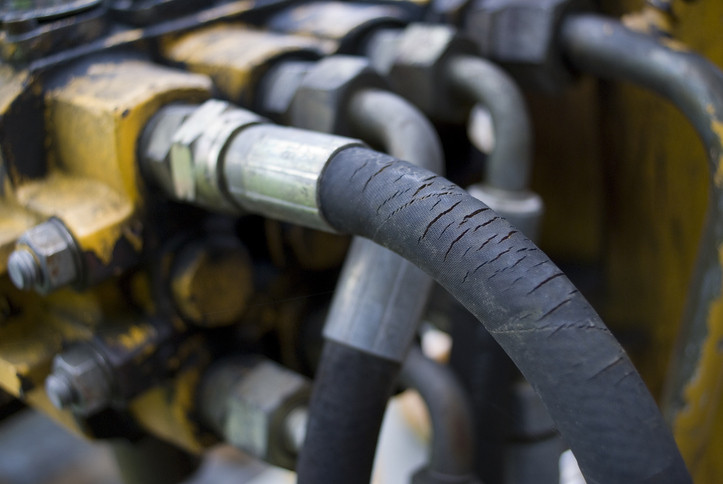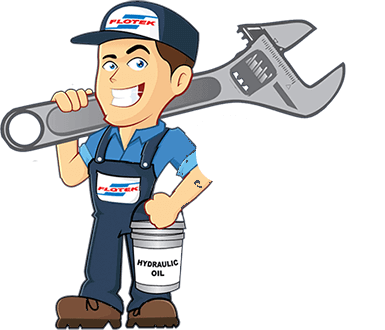Are Your Hydraulic Hose Casings Cracking Up?

In your hydraulic system, hydraulic hoses are one of the stars of the show. So when these hoses and hose covers start to crack, things start to go downhill... Here’s how to identify sinister cracks or abrasions in your hose casings and how to avoid them happening in the first place. Because you can’t “Go with the Flo” if your hoses are cracking...
Detection of Cover Cracks and Abrasions
Cover cracks and abrasions on hydraulic hoses generally stem from exposure to external factors like temperature fluctuations, chemical contact, and mechanical stress. Early identification of these issues is paramount to preventing further damage to your hydraulic system.
Some indicators of cover cracks and abrasions include the following:
Leaks:
Cracks and abrasions in hydraulic hoses can lead to fluid leaks. If you detect leaks, you really need to call on a hydraulic professional to address the cause of the leak.
Blistering:
The presence of blisters on hydraulic hose surfaces may signal the onset of cover cracks. You should scrutinise the hoses displaying blistering immediately for signs of damage.
Abrasions:
Friction against other components can cause abrasions on the hose cover, weakening it and potentially causing cracks.
How to prevent Cover Cracks and Abrasions
Proper Installation:
The correct installation of hydraulic hoses is crucial for averting cover cracks and abrasions. Installation should be done to minimise contact with other components, reducing the likelihood of high temperatures and abrasions.
Routine Inspection:
It may seem like a pain, but regular checks of hydraulic hoses to facilitate early detection of cover issues are worth it. If cracks or abrasions are identified, you can replace hoses and casings, preventing any system damage. And if you don’t have time, Flotek can do an annual inspection of all your hydraulic hose casings.
Protective Covers:
Installing protective sleeves or wraps will shield hydraulic hoses from external elements that might induce cover cracks and abrasions. Depending on the type of hose, there are many types of protective covers:
Spiral Guards
Hose Armour
Heat Shield
Textile Sleeving
Plastic Tubing
When choosing a protective cover for hydraulic hoses, it's essential to consider the environment in which the hoses will be used and the level of abrasion and other hazards they will be exposed to.
Conclusion
Identifying and preventing cover cracks and abrasions in hydraulic hoses is integral to maintaining the efficiency and longevity of your hydraulic systems. By adhering to practices such as regular inspections, proper installation, and the use of protective covers, you can avoid any downtime PLUS big repair bills down the track.



